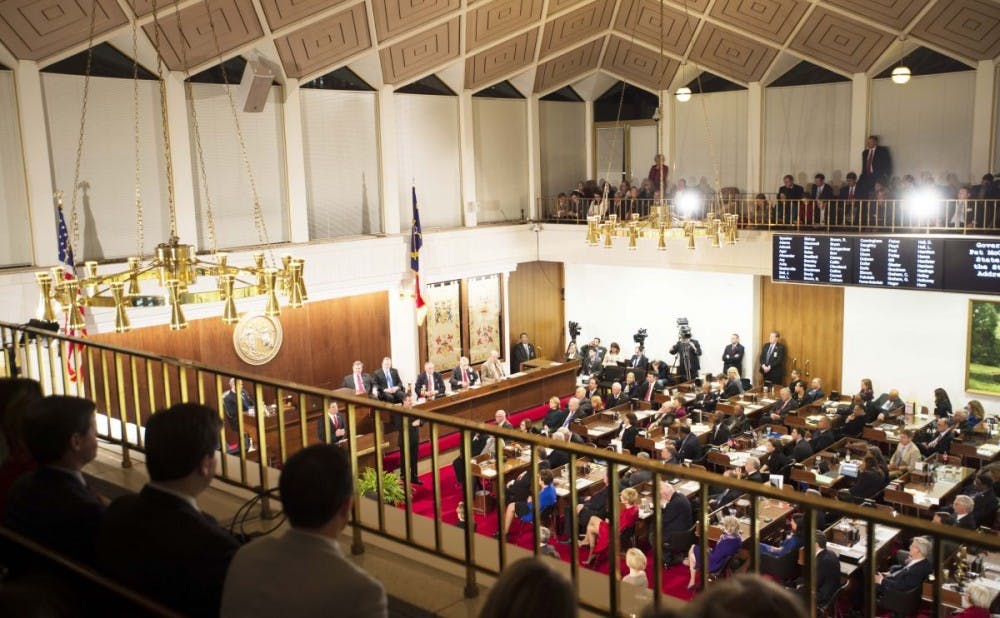The recent exodus of teachers out of Durham and the state of North Carolina could have an impact on Duke faculty and their children moving forward.
In the past five years, the North Carolina public education system has seen a dramatic drop in its nationwide rankings of teacher salaries. Recent legislation has abolished raises for teachers with master’s degrees, and career-track teachers have not received a pay raise in seven years, wrote Kate Allman, the director of Duke's Master of Arts in Teaching program, in an email.
Despite concern that these recent trends may affect current or prospective faculty at Duke, Michael Schoenfeld, vice president for public affairs and government relations, said they do not influence faculty decisions to move to or stay in the area. He instead emphasized the overall quality and variety of public and private schools in the Research Triangle area.
“It’s not a secret and not a good thing that the state of North Carolina is not investing even more in education,” he said. “At the [same] time, I would also say that...Duke is in is an amazing metropolitan area, and we are fortunate to have some of the best public schools in the state in this region, as well as a lot of good private schools.”
According to U.S. News & World Report, the Research Triangle area contains five of the top 10 high schools in North Carolina—Raleigh Charter High School, Woods Charter, East Chapel Hill High, Chapel Hill High and Durham School of the Arts.
Public schools in Durham, however, have seen a higher teacher turnover rate than the rest of the state—20.43 percent compared to the overall state’s rate of 14.84 percent—meaning teachers have been leaving the district more, according to a 2014-15 report from the North Carolina Department of Public Instruction.
Although these recent changes in Durham’s public education system may not discourage prospective faculty from moving to the Research Triangle area, faculty may still distinguish between each of the school districts.
“While I can’t speak to other faculty’s decisions to come or not come to Duke based on the school system, I have been surprised at how many faculty and staff do not send their kids to Durham Public Schools,” Allman wrote. “I have heard several faculty say that they chose to live in Chapel Hill or Raleigh because they didn't want to send their children to Durham Public Schools.”
Teacher turnover in the Chapel Hill school district in the past year was 18.58 percent, slightly lower than Durham’s. Chapel Hill, however, has only 18 public schools in its district, while Durham has 54.
Schoenfeld noted that education is an important factor in faculty’s decisions on where to live, but not the only one. Allman, who resides in Durham with her family, wrote that they chose to live in Durham for its diversity, character and nightlife.
“We have decided to send our children to Durham Public Schools out of a strong commitment to public schooling and our love of Durham,” she wrote.
Allman also emphasized Duke’s commitment to the public education system of Durham, citing the 62 Duke MAT graduates who currently teach in the city's public schools, including middle and high schools.
“My graduates love Durham and believe in the public school system. They just need the support to do their jobs well.”
One program that helps support Duke graduates interested in education is TeachHouse, which helps situate new teachers in local schools. Other outreach efforts include the FOCUS cluster “Knowledge in the Service of Society," which provides first-year students experience in Durham public schools and leadership. The Duke-DPS Parent Partnership, which Allman founded, brings together Duke faculty and staff “committed to investing our children, time and resources in Durham Public Schools.”
“If we come together with the common goal of making Durham Public Schools the best school system in North Carolina, I have no doubt that we will succeed,” she wrote.
Get The Chronicle straight to your inbox
Signup for our weekly newsletter. Cancel at any time.

